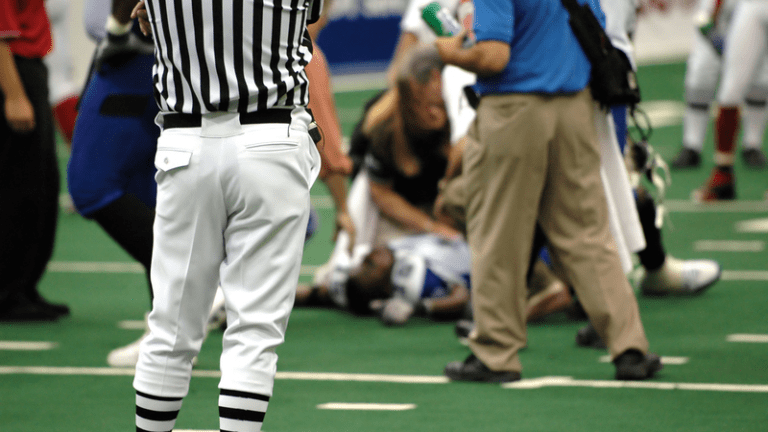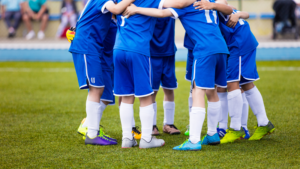Concussions A Concern For Youth Sports Football Players
My eight-year-old grandson is a sports fanatic and already is showing signs of being a talented athlete. He takes after his dad, who was a very good football player.
His parents have done right by exposing him to different sports, but his favorites are football and basketball. He watches and learns from television and as a spectator at live games. He plays with his dad.
He just finished his second year of playing flag football. He listened to his coaches, wanted to be there and met his “preseason” goal of scoring at least one TD in each game. At the end of the season, his coach told his dad that, because he was so much more advanced than the other kids, he should play tackle football next season.
Here we go.
His parents have a tough decision to make. Like most parents, they are proud of their son and don’t want to hold him back in his development. He loves to play. But he’s going to be only eight years old.
Besides the fear of broken bones in a body that is not yet fully grown, there is the real fear of concussions, even at a young age. There is a multitude of studies showing kids can be affected by injuries sustained in their early athletic years.
Several years ago, researchers at Virginia Tech and Wake Forest released a first-ever study that measured head impacts among youth football players. It found, unlike in high school and college ball, most of the severe hits in youth football happened during practices. The study recommended the elimination of high-impact practice drills that didn’t replicate game situations.
“Head impact exposure in youth football, particularly at higher severities can be reduced through evaluating and restructuring practices,” the study noted. “This can be achieved through teaching proper tackling techniques and minimizing drills that involve full contact; and instead, focusing on practicing fundamental skill sets needed in football at these young ages.”
The sample size was small. However, the average player in the report sustained 107 head impacts during the course of 9.4 practices and 4.7 games. Most of the hits were modest in force, as measured by sensors placed in the padding of the helmets. But some topped 80 Gs, akin to “some of the more severe impacts that college players experience, even though the youth players have less body mass and play at lower speeds.”
Boys of grade and middle-school age usually lack the neck strength of teenagers, making them more vulnerable to injury.
Dr. Robert Cantu, clinical professor of neurosurgery at Boston University Medical School and author of “Concussion and Our Kids: America’s Leading Expert on How to Protect Young Athletes and Keep Sports Safe,” has recommended children under the age of 14 not play contact sports such as football, ice hockey, soccer, and lacrosse until they are modified to eliminate head blows in practice and games.
In an article published on slate.com, Cantu made sure to clarify that “[y]oungsters are not miniature adults.” He explained the nerve cells in their brains do not yet have a complete coating that offers protection, meaning they are more susceptible to concussions and they recover more slowly. He also noted kids have larger heads relative to the rest of their bodies and weak necks, creating a “bobblehead-doll effect.”
Kids usually play in older equipment, have access to the least educated coaches and are not availed of immediate medical care at a practice or game.
Kids are too young physically and mentally to grasp safer techniques on a regular basis even if they have been coached by someone trained with proper technique. They don’t yet understand the ramifications if they tackle with the head down rather than up — so is there a middle ground?
What’s a parent to do?
How useful was this post?
Click on a star to rate it!
Average rating 0 / 5. Vote count: 0
No votes so far! Be the first to rate this post.



